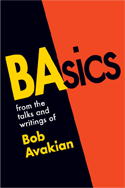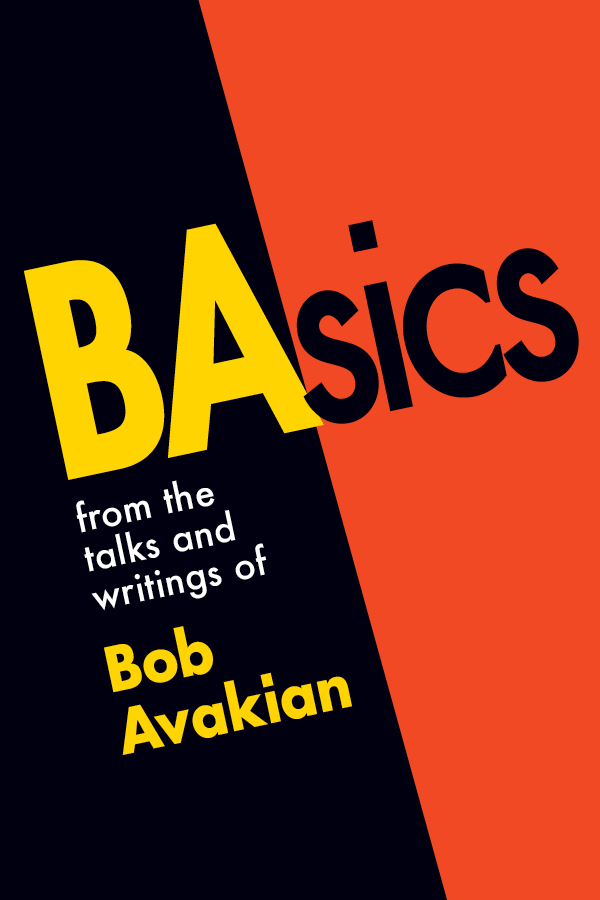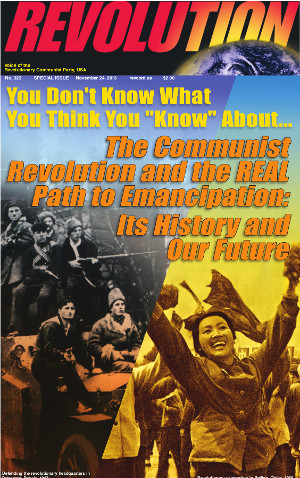The New York Times Meets with Trump
A Dangerous Step in “Normalizing” Fascism
November 28, 2016 | Revolution Newspaper | revcom.us
On Tuesday, November 22, Donald Trump sat down for an interview with editors, columnists, and reporters at the New York Times, a newspaper which had been sharply critical of Trump during the election campaign.
Afterward, the Times ran an article headlined “Trump, In Interview, Moderates Views but Defies Conventions.” The article claimed that Trump was “dropping his vow to jail Hillary Clinton.” It stated he had “changed his mind about the value of waterboarding.” It assured readers that Trump is “pledging to have an open mind about climate change.” We were also informed that Trump had “vigorously denounced” the Nazi “alt-right” conference in Washington, DC, two days prior to the interview. And we were given Trump’s unchallenged assertion that his chief of strategy, notorious white supremacist Steve Bannon, was “a decent guy” and not “a racist.”
Other media followed with headlines like “Donald Trump changes his mind on climate change, Clinton, the press in meeting with The New York Times.”
The clear message: Trump was moderating his views now that the campaign was over and he was facing the challenges of actually governing. In short, Trump was moving toward the mainstream of U.S. establishment thinking.
But what the Times reported is not what Trump said during the meeting. The transcript of the meeting paints a totally different picture: it shows that Trump did not moderate his views. Instead, it shows that the Times had moderated its reporting on Trump, editing and mischaracterizing his comments to make him look less extreme, and more acceptable.
This is utter bullshit, intended to disarm and pacify people. Coming from the New York Times, it is a major step in the normalization of fascism. It covers up the reality that his fascist regime will be, if allowed to consolidate power, a catastrophe for humanity, writing that reality out of its coverage. This kind of accommodation and conciliation is totally outrageous and must be opposed!
What Did Donald Trump ACTUALLY Say to the New York Times?
* Trump NEVER said that he would not prosecute Hillary Clinton, never said it was wrong to threaten to prosecute her, or that a president doesn’t have the legal right to decide who gets prosecuted. What he said was that there are reports he wasn’t “enthused about” prosecuting Clinton, that he wanted to move forward and he didn’t mean the Clintons any harm. But he did not rule out further investigations or prosecutions, so this threat still hangs over Clinton and the Democrats, and how “interested” Trump is in pursuing Clinton could change.
* Trump NEVER said that he had changed his position on climate change (Trump has claimed that climate change is a “hoax” drummed up by China to hurt the U.S. economically, and has vowed to pull out of the Paris Climate Accords). Thomas Friedman of the New York Times introduced this issue, saying it was “very near and dear to my heart,” while noting that Trump should be concerned too because “You own some of the most beautiful links golf courses in the world.”
Trump responded with almost every bit of idiocy the extreme right uses to deny climate change: “the hottest day ever was in 1890,” “we’ve always had storms,” and “some very smart people” disagree that climate change is real. He joked that if the seas do rise (which would drive hundreds of millions of people from their homes), his Doral Resort might even be more valuable because it is a bit inland... and New York Times staff laughed at this.
When asked directly if he was changing his position on the link between climate change and human activity, Trump claimed to “have an open mind,” and that there was “some connectivity.” But then he went on to talk extensively about how uncompetitive U.S. companies are, and how at the end of the day, his stance on climate change would depend on “how much it’s going to cost our companies” and affect their “competitiveness.”
The Times staff let all this go without challenge, and Friedman ended that part of the discussion with a feeble joke: “I’d hate to see the Royal Aberdeen [a famous golf course located near a Trump resort] underwater.” And then the Times summed all this up as Trump “moderating” his position!
* Trump NEVER said he won’t follow through on his threat to bring back waterboarding and even worse torture. When asked, he responded that he’d talked to a general who told him that he “never found it to be useful.” Then Trump quickly added, “I’m not saying that I’ve changed my mind.” He then went on to repeat his let’s torture campaign talking points: “Look, we have people that are chopping off heads and drowning people in steel cages and we’re not allowed to waterboard.” Then he explicitly left the door wide open to this vicious torture: “If it’s so important to the American people, I would go for it. I would be guided by that.”
* Trump’s repudiation of the alt-right was not “vigorous,” it was empty, and completely contradicted by his defense of Steve Bannon. Just three days earlier, the alt-right held a celebration of Trump’s election complete with racist, anti-Semitic, and genocidal speeches and people doing Nazi salutes while shouting “Heil Trump.” Trump lamely said “I disavow” and claimed he had “no idea” why these fascists were Seig Heiling his fascist regime. Then he defended Steve Bannon as a “great guy.” But Steve Bannon openly bragged in July that his Breitbart News is “the platform for the alt-right,” and has never backed away from that at all.
* On top of this, the Times did not even bother to ask Trump about his plans to immediately deport four million Mexican immigrants. The issue of banning people from Muslim countries from entering the U.S. never came up. Neither did Trump’s talk of instituting a Muslim registry, or the statement from General Michael Flynn—Trump’s pick for national security advisor—that “fear of Islam is rational.” The New York Times never asked Trump about his public bragging about sexually assaulting women. The editors and reporters didn’t utter a word about Trump’s central role in creating a lynch mob atmosphere in New York City against the Central Park 5, or about many other statements by Trump that pose life-and-death threats to millions.
In the Name of Humanity,
We REFUSE To Accept a Fascist America
Rise Up... Get Into The Streets...
Unite With People Everywhere
to Build Up Resistance in Every Way You Can
Don’t Stop: Don’t Conciliate...
Don’t Accommodate...Don’t Collaborate
Read more
Reproduce and Distribute Leaflets and Posters HERE
After Criticizing Trump During the Campaign, Why Is the New York Times Now Whitewashing His Comments?
Prior to Trump’s election, the New York Times editorial board titled a major editorial: “The Sleaziness of Donald Trump.” Prominent Times columnist Thomas Friedman ended a column on Trump with “Electing such a man would be insanity.” Columnist Paul Krugman denounced “Donald Trump the anti-American.” Ross Douthat argued that Trump threatened “the systemic durability of the American-led order” and that defeating him was “a matter of life and death—for Americans and for human beings the world over.”
Even while these attacks stayed within the limits of arguing that Clinton would be a better leader for the U.S. empire, they stung and angered Trump. They cast an air of illegitimacy around his presidency. And they were part of the atmosphere in which tens of thousands of people took to the streets and far larger numbers embraced the hashtag #NotMyPresident. In that sense the opposition of the Times and similar forces potentially represented a serious obstacle for Trump and his crew in “normalizing” and consolidating their fascist takeover in the face of the hostility of large sections of the population, including the angry and anxious readership of the Times.
Trump’s Meeting: Setting New Terms for the Press—New York Times Accommodates
After being elected, Trump met with the New York Times to set terms for how the newspaper would cover his presidency. In particular, Trump insists the Times treat his transition to the presidency as normal, while covering over the fact that he is actually attempting to impose and consolidate a fascist regime.
The meeting transcript also makes clear that the Times seems to have willingly, and at times even enthusiastically, accommodated Trump’s objectives. From the opening words of publisher Arthur Sulzberger Jr., the meeting was filled with slavish expressions of “gratitude” and “thanks,” punctuated by frequent friendly small talk and laughter. It was marked by an almost complete refusal by Times journalists to challenge any of Trump’s bald-faced lies, or even to defend a New York Times columnist who Trump attacked during the interview. The tone throughout the interview was that of a love fest—the Times editors fawning on Trump, Trump calling the Times “a great American jewel.”
A fraternal—ruling class—cordiality was being forged. The terms: accepting the legitimacy of the Trump presidency, even as he continues to advocate a fascist program (softened only by some vague promises to “keep an open mind,” etc.).
It is important to note that not all Times reporters and columnists went along with this. At least one, Charles Blow, wrote in his column (“No, Trump, We Can’t Just Get Along”) that was soon trending on Twitter, “I will say proudly and happily that I was not at this meeting”—this is an example of refusing to be complicit that others need to learn from and build on.
But behind the camaraderie and the smiles are very high stakes, and sharp struggle within the U.S. ruling class. Before the election, fascist bullying and threatening the media had been a centerpiece of the Trump campaign for 15 months. Reporters were mocked and sexually degraded, denied access if they asked “challenging” questions, kept in pens at Trump rallies while crowds were whipped up into a frenzy against “the lying news media.” Individual reporters—particularly women, like MSNBC’s Katy Tur and others—were publicly singled out and denounced at rallies, to the point where the Secret Service had to provide Tur with protection. Reporters were assaulted, and many have said that they were in physical fear at Trump rallies. Those who wrote “critical” pieces were targeted by the pro-Trump troll army with extremely vile, violent, racist, and anti-Semitic online attacks.
The day before this interview, Trump met with broadcast media and ranted about what liars they were; the very morning of the interview he threatened to cancel it and referred to “the failing New York Times.” During this interview, Trump was essentially telling the Times, “We can do this the nice way, or we can do it the hard way, but either way, you are going to go along with what I am doing or you are going to get run over.”
So why, after repeatedly criticizing Trump during the election, did the New York Times fawn over him, and whitewash what he actually said?
The New York Times is one of the major voices of the liberal or Democratic Party wing of the U.S. ruling class. During the election campaign, they felt that a Trump presidency would harm the interests of U.S. imperialism and undermine the social cohesion of U.S. society.
But now that Trump has been elected, the Times leadership and their key staff have been won over that the larger interests of the ruling class demand that they toe the line here, and they are more than willing to not just dial down their attacks, but, it seems, to bend over backward to normalize and legitimize Trump’s rule. Again, their key interest is in maintaining the legitimacy and stability of U.S. imperialism overall, and they are far more fearful of the kind of social upheaval and political instability that it would take to drive Trump out than of what Trump will do. The New York Times is also very aware that legitimating the “peaceful transfer of power through elections” is something the bourgeoisie upholds and promotes as one of the linchpins of the legitimacy of their rule.
At the same time, as Trump pursues his fascist agenda, and to the degree that generates opposition or runs into obstacles, the New York Times may again come to oppose Trump in various ways. Such opposition could lead the Trump fascists to attempt to take down or destroy the New York Times (and other institutions like it). At that point, defending a bourgeois institution like the New York Times may become a significant part of the struggle against Trump’s fascism and to defend the rights of the people, as part of preparing for an actual revolution to overthrow this entire system.
At this moment, however, the Times has closed ranks with Trump. This is criminal. Its efforts to normalize Trump, to calm the very justified anger and fear of its readership, must be exposed and repudiated. This is part of refusing to normalize Trump and building the struggle to prevent the consolidation and imposition of his fascist regime.
Volunteers Needed... for revcom.us and Revolution
If you like this article, subscribe, donate to and sustain Revolution newspaper.








